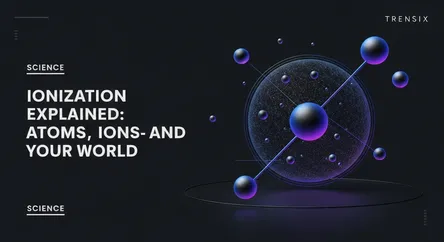Science
Ionization Explained: Atoms, Ions, and Your World

A simple explanation of ionization, the process of creating charged atoms, why it's a key scientific concept, and its impact on technology and health.
What is it?
Ionization is a fundamental process where a neutral atom or molecule gains or loses one or more electrons, resulting in a net electrical charge. The resulting charged particle is called an ion. If it loses electrons, it becomes a positively charged cation; if it gains electrons, it becomes a negatively charged anion. This transformation can be triggered by various means, including collisions with other particles, exposure to high temperatures, or interaction with electromagnetic energy like X-rays or UV light. The minimum energy required to remove an electron from a neutral atom is known as its ionization energy.
Why is it trending?
The concept of ionization is foundational to numerous fields of science and technology. It is crucial for analytical techniques like mass spectrometry, used to identify unknown compounds in medicine and environmental science. Advances in medical treatments, such as radiation therapy for cancer, rely on the principles of ionizing radiation. Furthermore, there's growing interest in air ionization for purification and its potential mental health benefits, with some studies suggesting negative ions may help reduce symptoms of depression. It remains a cornerstone of chemistry education for explaining periodic trends and chemical reactivity.
How does it affect people?
Ionization has a significant impact on daily life and health. It is the basis for many technologies, including fluorescent lights, smoke detectors, and radiation detectors like Geiger counters. In medicine, ionizing radiation is essential for X-ray imaging and cancer treatment. However, high-energy ionizing radiation can be hazardous, with overexposure posing risks like tissue damage and an increased chance of cancer. In nature, ionization is responsible for the beautiful auroras. Some research also explores the positive psychological effects of environments rich in negative ions, such as near waterfalls or beaches.